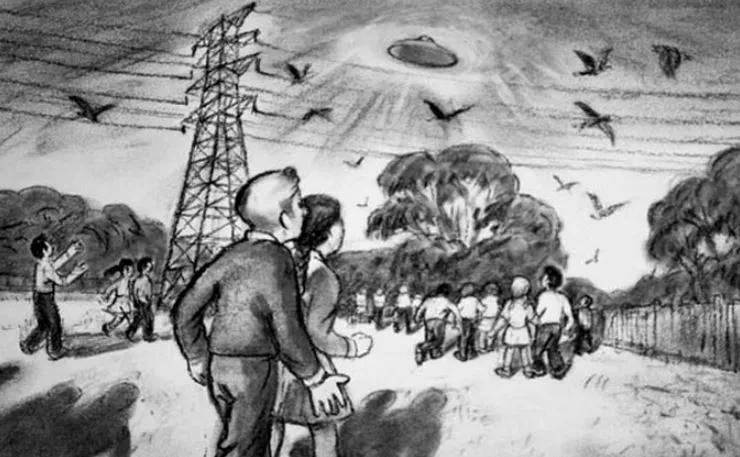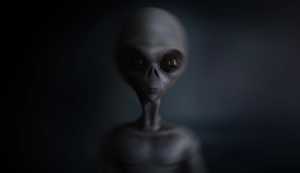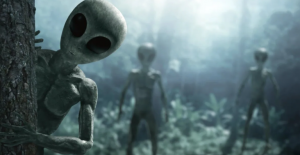The 1966 Westall UFO Incident: Refuting the Official Explanation


What happened at Westall in Clayton, Victoria on 6 April 1966 has become one of our most prominent UFO mysteries. It has become widely known through the work of Shane Ryan and the excellent 2010 documentary ‘Westall’66 – A Suburban UFO Mystery’ directed by Rosie Jones.
Here I will focus on why I think the case is credible and why the HIBAL balloon theory, still trotted out by uncritical media, does not explain what happened.
Melbourne Herald Sun journalist Mark Dunn wrote the story which was published online on 6 August 2014 with the headline “Westall ‘UFO’ incident was actually government radiation testing, reports reveal.”
A shorter version of the story appears in the hard copy of the paper the following day with the headline “UFO all hot air – ‘Westall’ was a balloon.” There is no evidence of any original research by the journalist, and it is based entirely on research done by long-time researcher Keith Basterfield. To quote from the story (my comments are in brackets):
“An almost 50-year-old mystery when more than 200 people believed they had a close encounter with a UFO landing in Clayton may have finally been solved after newly-unearthed government documents revealed a secret radiation-testing program. [The HIBAL programme was not conducted in secret at the time of the Westall incident. HIBAL was openly reported in newspapers from at least 1965 and beyond 1966.]
“Although federal and state government agencies refused to comment about the 1966 ‘Westall’ incident at the time, it is now believed that, rather than a UFO, what landed was an errant high altitude balloon used to monitor radiation levels after the controversial Maralinga nuclear tests.
The HIBAL program was a joint US-Australian initiative to monitor atmospheric radiation levels using large silver balloons equipped with sensors between 1960 and 1969.

Documents held by the National Archives and former Department of Supply indicate one test balloon launched from Mildura may have been blown off course and came down in Clayton South in a paddock near Westall High School, alarming and baffling hundreds of eyewitnesses, including teachers and students. [No official documents have been found as of the beginning of August 2014 that refer to any HIBAL launch being the explanation for the events at Westall in April 1966. No documents have been found to confirm the scheduled 5 April 1966 launch took place.]
“After hovering over the area, it landed at an area known as The Grange, behind a grove of pine trees, before taking off again and being pursued by several light aircraft in a sighting which lasted 20 minutes from 11am on April 6, 1966. The event has ever since been shrouded in mystery.”
“But researcher Keith Basterfield, who has spent years investigating unexplained phenomenon in Australia, said a ‘runaway’ balloon from the HIBAL (high altitude balloon) project was the likely answer.
“Each test balloon lifted a 180kg payload consisting of an air sampling and telemetry unit in a gondola and was followed by a light aircraft tasked with tracking it and triggering its 12mtr parachute via radio signal.”

“Immediately after the Westall ‘UFO’ sighting, reports emerged of government men in suits converging on the area and asking school officials and other witnesses to not talk about the event. A contemporary witness reported these ‘suits’ stated what the students saw was part of a secret government exercise and that for national security reasons they were forbidden from discussing it…
“What is strikingly missing is a memo reporting on the actual four launches for April 1966, one of which was scheduled for 5 April 1966, the day before Westall. So we have no (official) knowledge of where flight 292 went.”
A document in the Australian HIBAL files may point towards the fact that no dramatic HIBAL related touchdown occurred at Westall on 6 April 1966. The Australian Prime Minister’s secretary in a memo to the Secretary of the Department of Supply dated 6 May 1966 (only one month after the Westall incident) indicated: “The indemnity clause was inserted in the HIBAL agreement because of the real risk of injury from descending instrument packages.” It tellingly does not refer to any HIBAL event of “descending instrument packages” coming down in populated areas, let alone suburban Melbourne.
The original SECRET classification of this file and the absence of any reference to HIBAL-initiated hazards or security concerns related to Westall during April 1966, strongly suggests that no such incident occurred.
A number of witnesses in the Westall incident report a heavy hand in what seemed like an official coverup. If it was a HIBAL related matter, the file would have contained references to it or at the very least an escalation in the security and liability fallout.
Instead, what is seen is a dense bureaucratic dialogue being slowly resolved to permit the HIBAL programme to continue with continual references to minimal risks. No references to a crisis at Westall caused by a messy HIBAL containment and retrieval suggest a logical conclusion: There was no HIBAL event at Westall on 6 April 1966.
A scenario like the HIBAL hypothesis might take flight if you ignore or reject a lot of impressive eyewitness testimony or only utilise suggestive fragments of the fuller story. Especially considering the coherence of much of the Westall testimony, some of it revealed in 1966 and 1967, and much more since then, particularly in the last decade, primarily through Canberra researcher Shane Ryan’s work.
Ken McCracken was involved in HIBAL as a scientist from Adelaide University from at least 1965 to 1968. In his memoir Blast Off: Scientific Adventures at the Dawn of the Space Age (2008), Professor McCracken in a chapter entitled ‘Little Green Men and other Weird Tales’ writes of “the most famous occasion” when flying saucers or UFOs factored into his scientific adventures.
It was a HIBAL launch, but it wasn’t Westall in 1966. In fact, it was 1968 in Sydney. This was about sightings of a high-level HIBAL balloon gone astray.

My point: if the events described at Westall in April 1966, even if we limit it to evidence gathered in 1966 and 1967, were due to a HIBAL balloon, payload or parachute (or variations of those combinations), we would have had a spectacular example of misinterpretation and hysterical contagion, which far outstrips the 1968 Sydney event as contender for “the most famous occasion” of a HIBAL “flying saucer” fallout.
I suggest that a low-level HIBAL event, while possibly creating some hysteria, would have been clearly identifiable, not as a UFO but as an obvious IFO – identified – and not a big deal other than containing it from causing injury, damage and retrieving the payload and its attachments. Photos of HIBAL parachute/payload configurations about to touch down make it pretty apparent that at a low-level people would easily confirm a parachute and payload.
For example, Westall school student Joy Tighe’s 1966 description of two separate circular UFOs (shaped like “upright domes”) “flying in varying directions,” “faster than some light aircraft in vicinity,” then turning on edge and disappearing fast, as recorded on a Victorian Flying Saucer Research Society report form in 1966. To suggest this description supports a sighting of a parachute connected to a heavy payload, weighing up to 200 kg, seems like an incredible force-fit.
It is a big stretch to suggest that winds caused a HIBAL parachute and payload to come down low, then go in varying directions, at times faster than light aircraft in the area, then turn and quickly disappear. That’s a pretty impressive performance for a balloon and payload at low altitude.
In this scenario it would be a wonder that the school children and teachers were able to stand upright in the wind conditions needed to keep the balloon/payload up in the air, defying the forces of gravity, and gyrating around the sky low over Westall school, at times flying faster than light aircraft despite being at a low altitude.
I was able to do a video interview with Joy (Tighe) Clarke at the 2006 Westall reunion event. I found her to be a compelling witness. I also videoed her 2006 drawing of the UFOs she saw. I was left with the same general impression with all the Westall witnesses I met at the reunion.
They told stories of their recollections and didn’t seem to be embellishing narratives. Sure, there are problems with testimony gathered decades after an event, but I was impressed with the general coherency and consistency of the individual stories. Collectively, they appeared to support an event that goes way beyond what a HIBAL incursion might have generated.
Given that for a long time I have focused on physical trace (UFO landing) accounts, I was pleased to eventually interview Victor Zakry who described witnessing, as a Westall school student, two identical objects, like Joy, but strikingly initially at ground level, that were connected directly with ground traces.
The reports of ground traces did not get the careful attention they deserved at the time. There are accounts of clandestine attention, but nothing has surfaced other than witness descriptions and a Victorian Flying Saucer Research Society photo of a grassed area suggestive of a trace, but may have been due to prosaic factors. We just don’t have certainty in that area, but there are plenty of speculations.

On 5 July 2008 I was able to undertake an onsite detailed investigation and interview Victor Zakry at Westall in Melbourne. I videoed the interview and got him to do a rough layout map of the events he witnessed. His account was consistent with a number of interviews he had given to others and me.
Victor indicated he was able to walk up close to one of the objects, while three other students stood close to the other object. A teacher and at least a dozen other students crowded along the high fence to get a view. Victor contemplated touching the object but thought better of it.
The two objects suddenly rose up from the grass and took off, one to the west, the other flew up and orbited a small plane before flying down to the south-west Grange reserve area, with students in pursuit. The UFOs were described as about 1.5 metres in height and approximately 5.4 metres in width. They left behind two circles of burnt grass.
Victor went home for lunch straight after this extraordinary experience which swept up much of the rest of his school. This initially to me seemed a strange thing to do given the unfolding events, but Victor explained that at the time he felt he didn’t need to see any more that day (6 April 1966) because he had seen the exact same object a few years earlier.
He was trying to take a wooden pallet from a factory site near the Westall Grange area during the early hours of the morning. His work was interrupted when a UFO flew over. It was the same looking object he would see during daylight at Westall in 1966 along with many in his school, but it was flying on edge – an appearance captured in a polaroid photo taken at the nearby suburb of Deepdene only four days before the Westall incident.
There were other similar encounters during this period of the 1960s in the area around Westall and neighbouring isolated suburbs of Melbourne, which in those days was the outer edge of the city. Pockets of this area still have something of an isolated, almost country, feel to them.

Victor also impressed me as a compelling witness giving consistent testimony. While, like Joy, he spoke of seeing two objects, Victor saw them at ground level and then watched them take off and go in different directions. Like Joy, he described one of them flying faster than a light plane. Indeed, he described it as orbiting the plane, then taking off and apparently heading down to the Grange area.
Victor later told me that he had a meeting with the school headmaster who encouraged him not to talk about the event because it might hurt his future chances of a career in art. The headmaster gave him that advice because he had witnessed something similar during the war and had experienced the pressure of being told not to talk about such things.
Victor followed the headmaster’s advice, but with the growing tide of witnesses coming forward since 2006 he now felt more comfortable reporting his own experience. His artistic abilities also provided us with some striking drawings of the objects he saw.
I don’t think the evidence that witnesses like Victor share with us should be diminished simply because they were described decades after the original event. Instead, when they are told with compelling conviction, we should accept them for what they seem to be – genuine attempts at recollections of past events – and try to see how they fit into the daunting jigsaw puzzle that the large body of testimony of Westall ’66 represents. There is a measure of coherency, but many aspects remain confusing.
This fits with Nassim Nicholas Taleb’s “black swan” concept, an interesting way of looking at things.
He says: “I am interested in how to live in a world we don’t understand very well – in other words, while most human thought [particularly since the enlightenment] has focused us on how to turn knowledge into decisions, I am interested in how to turn lack of information, lack of understanding, and lack of ‘knowledge’ into decisions – how not to be a ‘turkey’. My last book The Black Swan drew a map of what we don’t understand; my current work focuses on how to domesticate the unknown.”
This approach could be used to help understand and address the UFO mystery, which is like one of Taleb’s “black swans,” a thing that “lies outside the realm of regular expectations,” “it carries an extreme impact” and “human nature makes us concoct explanations for its occurrence after the fact, making it explainable and predictable.” These are key attributes of Taleb’s “black swans,” events of rarity, extreme impact, and retrospective predictability.
It is with the third attribute that mainstream science and media have let us down. They tried to explain the whole phenomenon away, but it is exactly the phenomenon’s ability to remain highly improbable to mainstream perceptions, and to have high impact in incredibly mysterious and profound ways, which should guide us. We have to learn to “expect the unexpected” and learn to understand it and learn from it.
The collective testimony gathered over decades powerfully argues that the Westall incident may well be a legitimate UFO mystery. Back in 1996, in my book The OZ Files: The Australian UFO Story, I concluded: “There is little doubt that something of an extraordinary nature was seen over the Westall school area and that at least one (UFO) appears to have landed and apparently left behind some physical traces. Numerous witnesses confirm these basic details. Other more exotic details vary in credibility …”

Sceptics and debunkers may uncritically embrace a HIBAL explanation for the Westall mystery, but the impressive nature of much of the testimony deserves far better.
I don’t think the answer for Westall ’66 is blowing in the wind. I suspect it may be providing us with an extraordinary insight into the impact and nature of the UFO phenomenon if we have the skills, determination and insights to go beyond the curtains of nature to reveal the real mystery being played out in our little place in the cosmos.
Thank you to all the Westall witnesses who have had the courage and interest to share their experiences and recollections. Thanks also to all the researchers, investigators and people trying to understand the mystery. It all helps stir this fascinating melting pot that is the UFO mystery and might yield great insights.




